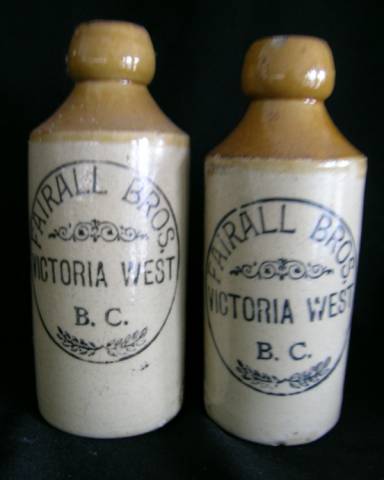
Garnet musket ball from excavations at Sitka, Alaska. Source: Alaska OHA.
It is a common trick in archaeology classes to puzzle students with gunflints – part of the sparking mechanism of older muskets – which were made until recent times by the remnants of a European flaked stone industry until modern cartridges replaced them. However, I had never heard of the use of stone musket balls before — but the picture above shows one made out of garnet, which is a heavy and dense mineral. This specimen is from a historic Tlingit-Russian site in Alaska. As the caption notes:
“Large garnets can be found in schist… Because of the shortage of lead, the Kolosh [Tlingit] use them instead of shot to kill sea animals.” [Khlebnikov’s 1817-1832 report, 1976:39]
It is typically ingenious for the Tlingit to have adapted traditional stone working technologies to the new, introduced technologies.
Over much of coastal Alaska the first contact aboriginal people had with Europeans was with Russians, rather than Americans, British, French or Spanish. One of the most important Russian settlements was Novoarkhangelsk, or New Archangel, founded in 1799 at the present day town of Sitka (map). The tumultous history of the founding of this outpost near a Tlingit village called Gajaa Héen, its subsequent capture by Tlingit warriors and ransom of Russian captives for 10,000 rubles, and its recapture 1804 by a Russian naval fleet during the “Battle of Sitka” is a subject for another day.
Suffice it to say that, as with all history, archaeology can fill in the stories of the everyday life of people and of events that go unrecorded by pen and paper. In this respect, it is good to see the Alaska Office of History and Archaeology has a very full, very detailed report available online about archaeological work at “Castle Hill”, the ancient Tlingit fort known as Noow Tlein which subsequently became the cornerstone of the Russian defensive facilities at New Archangel. You can browse the report chapters here, and the photos here and here. No doubt I will post more in due course, as there are some extraordinary artifacts found at this site, not least among which is this hand-made toy musket.
The Russians may have won the battle of Sitka, but they eventually left, leaving behind the Sitka Tlingit tribes to continue their journey to the present, where their vibrant culture continues to thrive as this interactive place names map for the modern Town of Sitka makes clear.

Fort at New Arkhangel -- "View of the Establishment at Norfolk Sound," 1805-06 (from a watercolor by G.H. von Langsdorff). Source: Alaska OHA.
PS: if you are skeptical about that Wikipedia link to the Battle of Sitka, then you can hear about the events in Tlingit here).

Plan of New Archangel, 1804. Fort site is to centre right. Source Alaska OHA.















